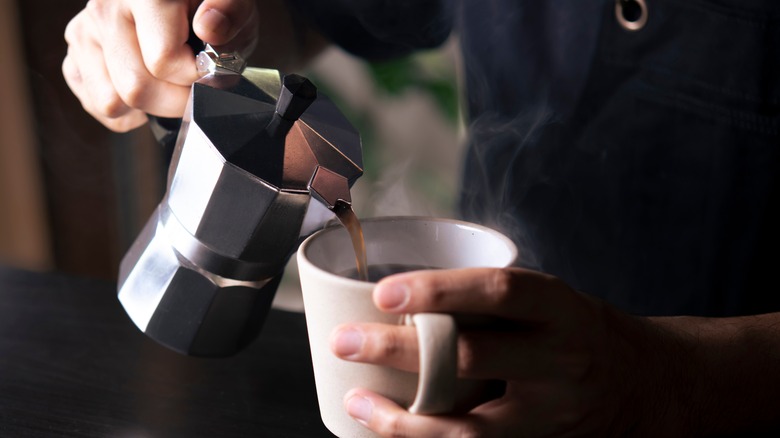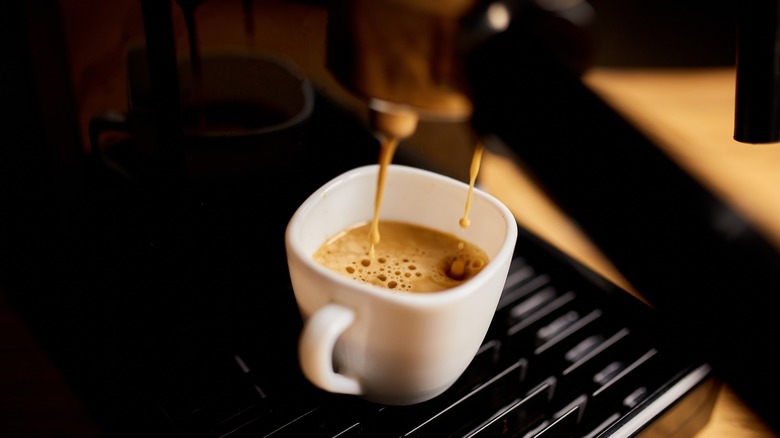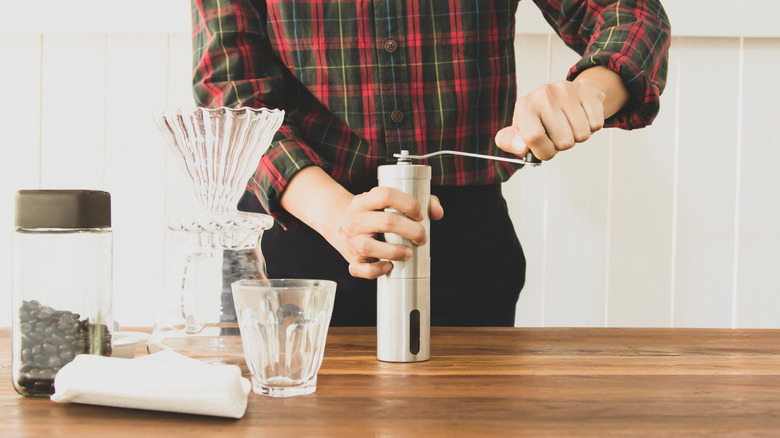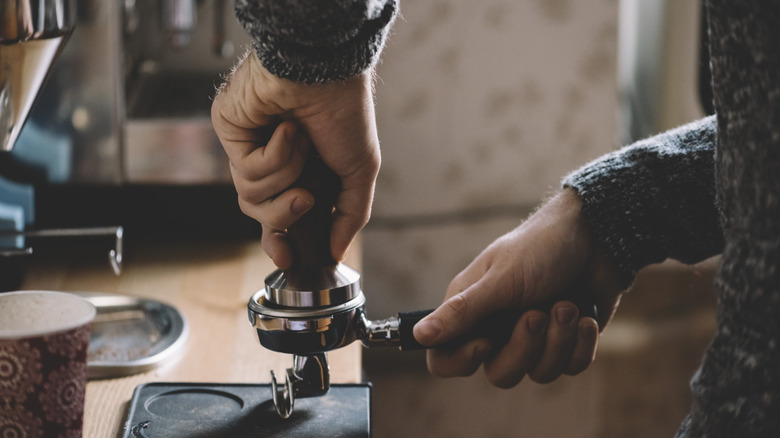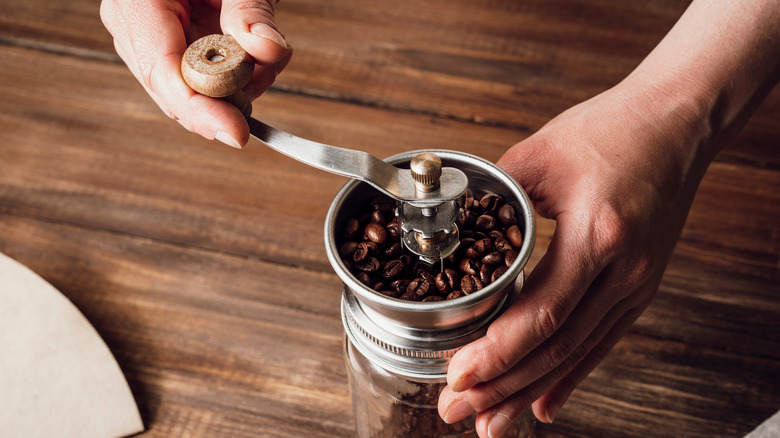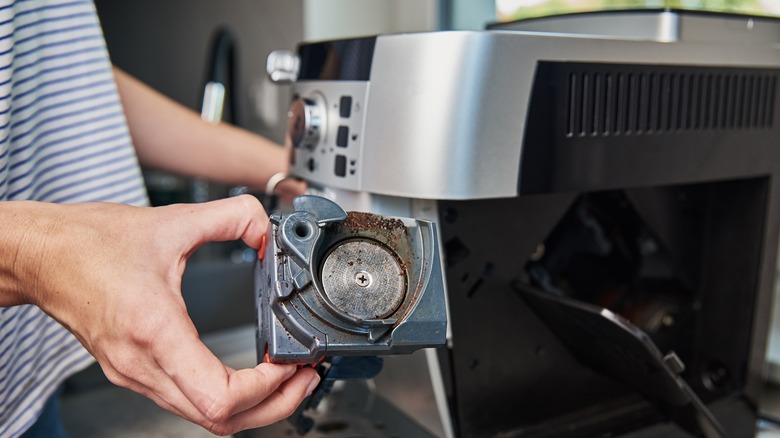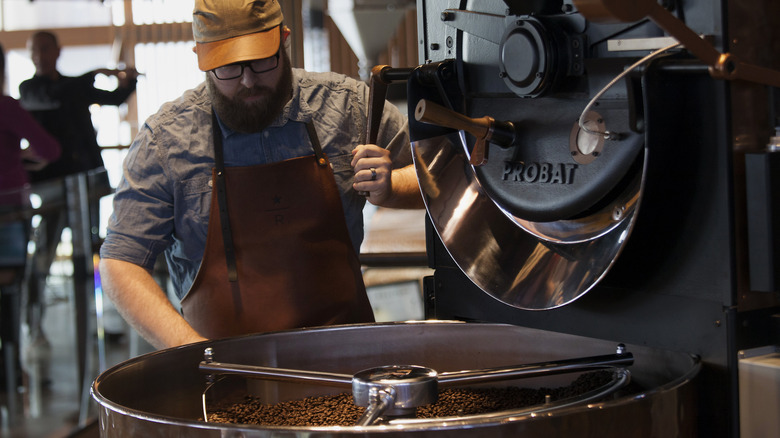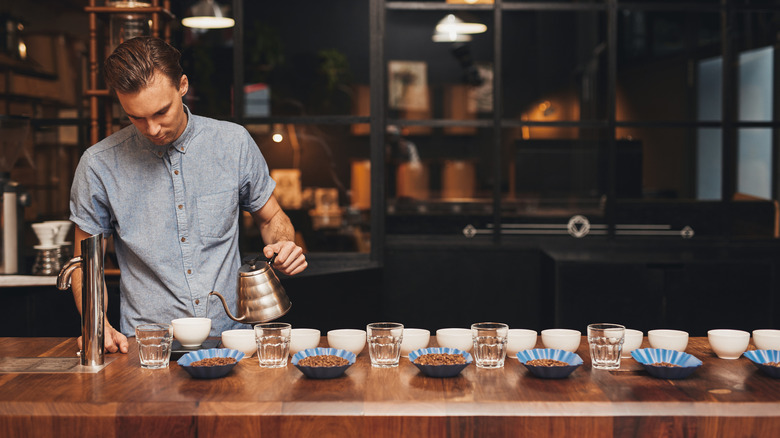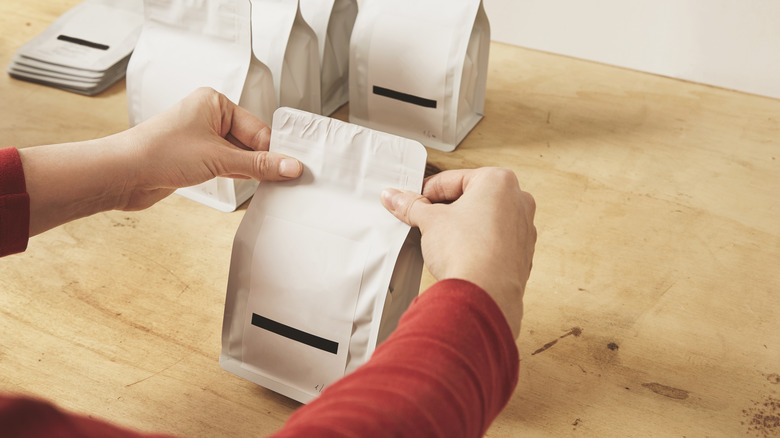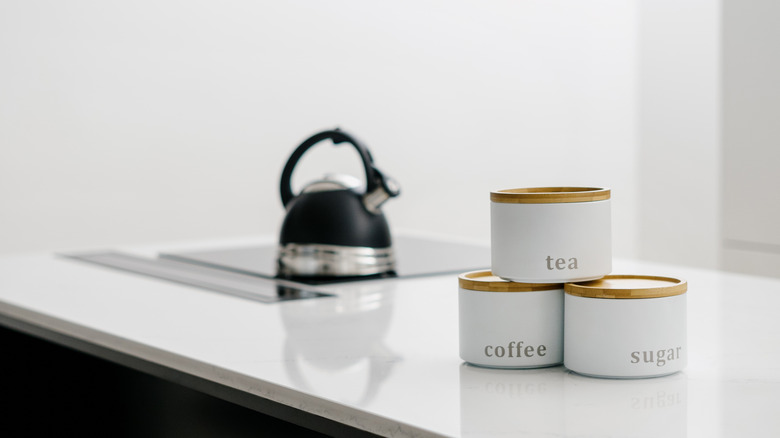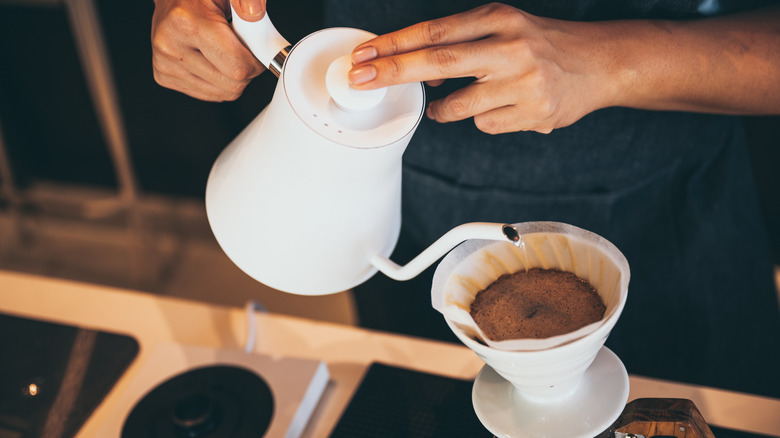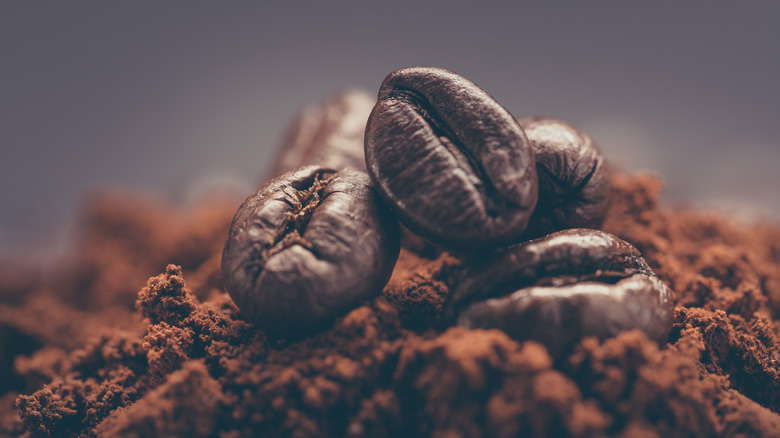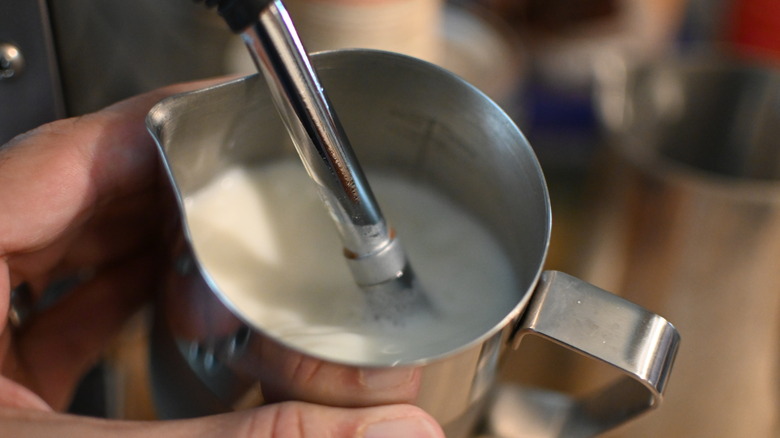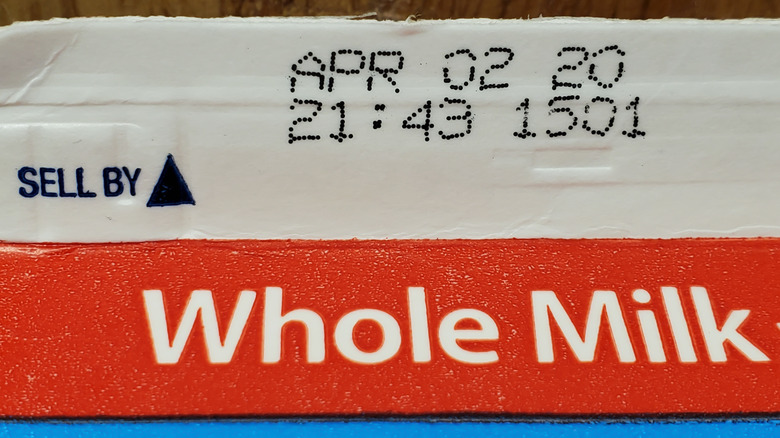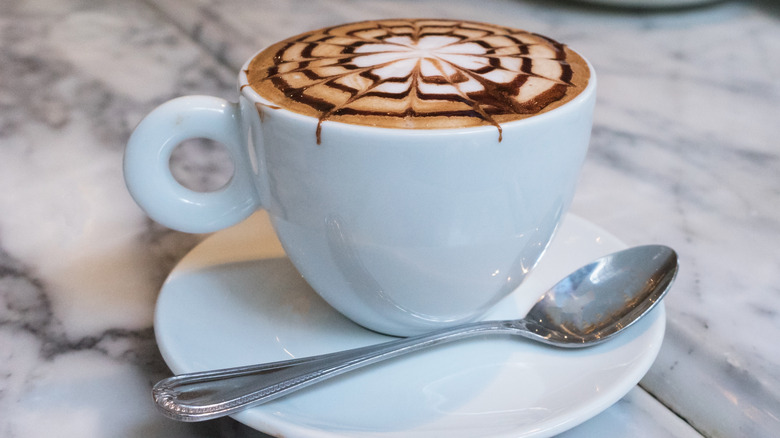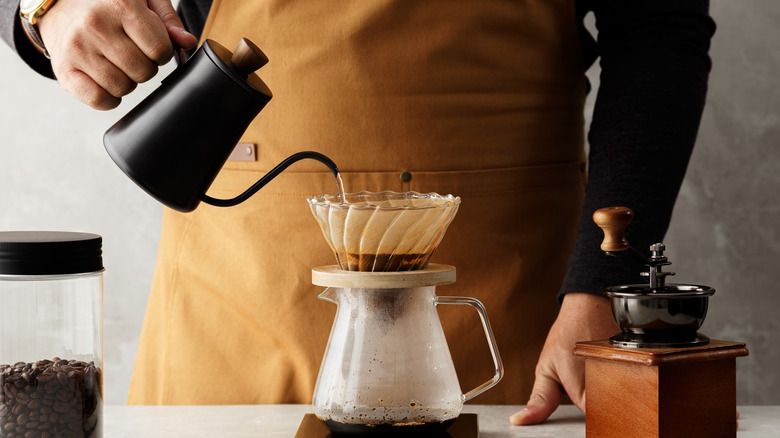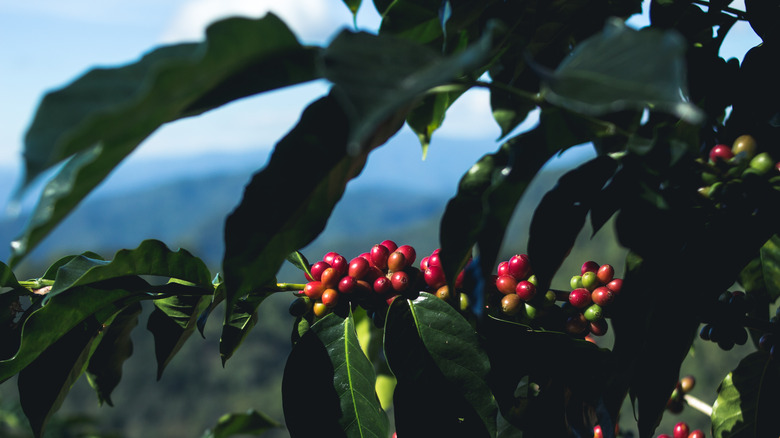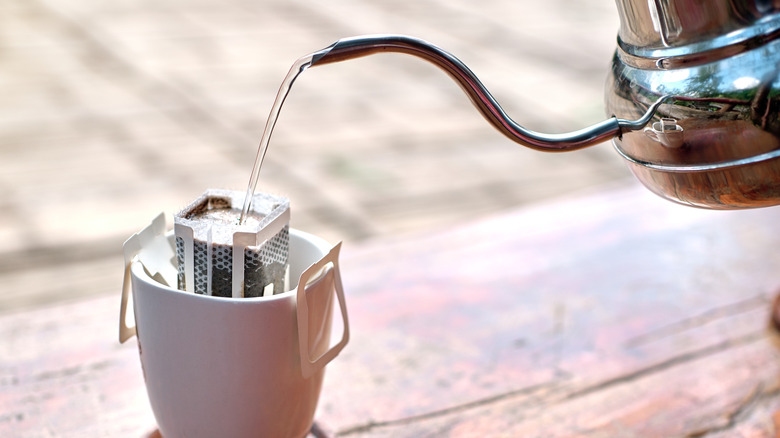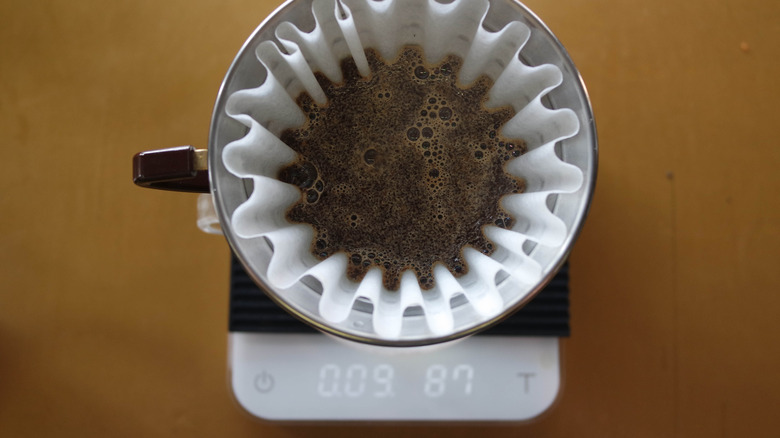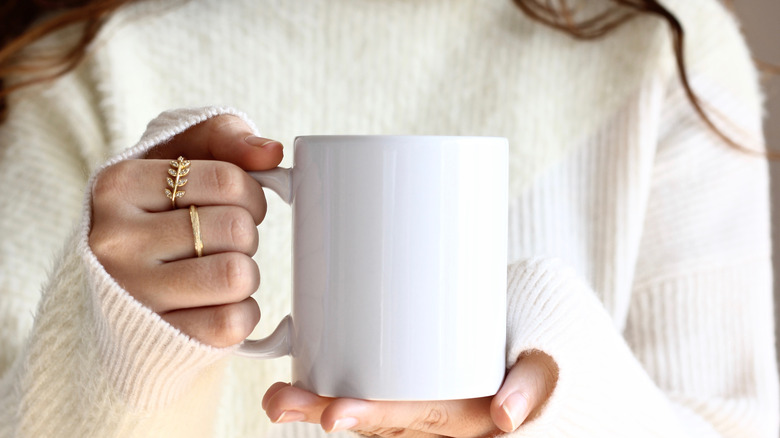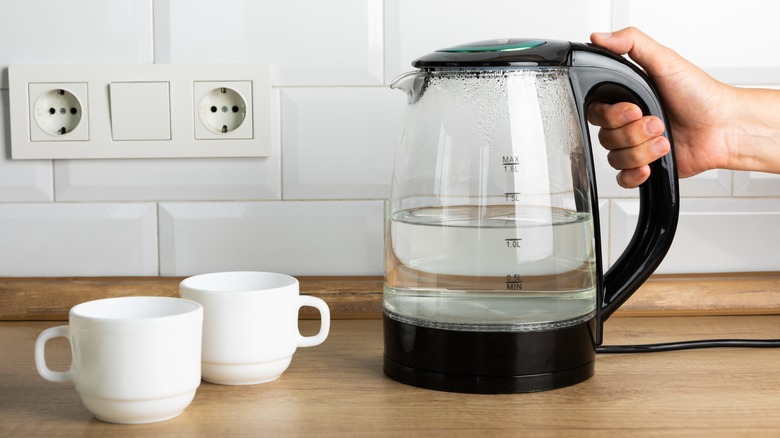20 Tips You Need To Be The Ultimate At-Home Barista
Coffee is one of the most popular beverages worldwide — and for good reason. Many folks turn to coffee as the morning beverage of choice because of the side effects of caffeine — an addictive chemical in the beverage that can increase focus, productivity, and work ethic. Other people drink coffee for the slightly bitter taste and strong flavor that can be paired with an array of flavorings, milk, and add-ins. And we're here for whatever reason you reach for a warm cup of coffee in the morning, afternoon, or really at any hour of the day.
Despite the fascination with this magic beverage, there are many mistakes that people make when making coffee at home. Many of these mistakes can be corrected with time and experience, but some of them are fundamental mistakes that you need to make to ensure your cup of coffee hits the spot. We're here to offer some barista-approved tips for making a delicious cup of coffee (or espresso) at home.
Invest in a good espresso machine suited to your skill level
If you are an at-home coffee novice, you might write "espresso machine" first on your list. But one of the biggest mistakes many folks make when it comes to buying their first coffee machine is not buying a machine that is at their skill level (or within their budget). Some of the most expensive espresso machine brands like Rocket and Diletta are priced at over $1,000 and have a lot of bells and whistles that would be best in the hands of a professional barista. If you're just poking around at an espresso machine for the first time, you're better off buying a simpler automatic machine that serves all of the functions you need.
If you're looking for a 2-in-1 espresso machine with a milk frother, we recommend trying the Wirsch espresso machine. It is priced at less than $200 and has single and double-shot options. All you need to do is grind and tamp your espresso in the portafilter and you are on your way to an energized morning.
Build your essential barista toolkit
Making the perfect cup of coffee (or espresso) is about ensuring you have all the tools you need for a barista mise en place. Your exact setup will depend on your method to make your coffee brew. If you're making espresso with an automatic machine, your shopping list should include a portafilter (a holder for the espresso grounds on the machine), tamp (to press down the grounds), a basket (to put the grounds in), a mug — and don't forget the machine, of course. If you're in the mood for a caffeinated punch but don't enjoy the subdued flavor of an iced coffee, you can make a cold brew coffee with a pitcher and a filter.
If you aim for simplicity in your kitchen, you should try using a Moka pot to make your next cup of coffee. It's portable, so you can take it camping or traveling, and doesn't require any extra equipment besides the pot itself.
Keep organized with a coffee nook
Having all of the tools you need is important, but keeping your tools readily available in a clean space is actually even more important. We recommend dedicating a small space in your kitchen to keep all of your coffee-making tools handy. If you don't want to sacrifice your countertop space, you can invest in a mobile coffee bar station instead. Use this cart to store your coffee or espresso machine, tamps, portafilter, and steamer equipment. You can also keep your mugs handy with a two-tier coffee organizer; it will help prevent unnecessary clutter in your cabinets.
If your machine of choice is a Keurig or a Nespresso, you can purchase a drawer to keep your pods methodically stacked and organized.
Always grind your beans yourself
Equally as important as your brew is your grind. Regardless if you're brewing a pour-over or an espresso, you should always grind your espresso beans rather than purchase your beans pre-ground. Grinding the beans down into small particles increases the surface area that the hot water touches, thus increasing the absorption. In turn, grinding your beans increases the amount of air exposed to the beans, which can cause the beans to become rancid more quickly. If you want to avoid the mistake of stale-tasting coffee, you should always stick to grinding the specific amount of coffee you need — when you need it.
If you don't always have the time to grind coffee before you make your morning cup of coffee, 80 Stone Coffee Roasters recommends freezing your coffee grounds for up to six months for maximum freshness. You can also go to a local coffee shop, buy the beans there, and most shops offer the free service of grinding your beans for you. That way, they're as fresh as possible (Starbucks also offers this service for its beans).
Clean your equipment regularly
If you notice your coffee pot is working slower than normal, it might be because of a mineral or "gunk" buildup in your machine. Neglecting to clean out your coffee machine can impact the performance of your machine, but it can also host a ton of bacteria, mold, and pathogens that can make you sick.
If you're drinking drip coffee from a machine, you'll need to clean your pot daily. If you use your standard coffee pot occasionally, you should be able to use water and vinegar to clean your machine every few months. As for an espresso machine, you should always empty the puck after you pull a shot to prevent buildup and to make it much easier to remove. Your shot of espresso might taste off if coffee granules get stuck on the burrs of the grinder and cause oil accumulation over time. To clean your coffee grinder, you can pulse rice to "soak" up the residual oils from the coffee grinds.
Understand how roast type impacts the flavor of the beans
The type of roast you use for your coffee is a fundamental component of its flavor. When the coffee beans are roasted, the water inside the beans starts to boil and pressurizes, thus releasing a cracking sound and causing the flavor to develop with time. The four main types of coffee roasts are light, medium, medium-dark, and dark — but there are many different sub-roasts that open up the possibility for new flavor profiles. Blonde roast, for example, is an acidic and slightly sour-flavored roast with punchy notes of citrus and wine.
The continental roast is roasted at a higher temperature than a blonde roast that tinkers on the edge of being burnt. These medium-dark or dark beans have a darker, caramelized flavor that is best enjoyed as an after-dinner coffee.
Learn the coffee lingo
There are a lot of words in the barista vernacular that can send your head into a tailspin. Among the most important phases to know include "single-origin" and "blends." Single-origin coffee comes from one particular location (either as an altitude, a country, or a coffee-producing region). Blends refer to several different coffee locales blended and roasted together for a more balanced flavor. You should also know the difference between Arabica coffee and Robusta coffee. Arabica coffee is generally considered to have a higher flavor caliber with a subtle sweetness.
Robusta coffee has a more bitter taste but with less acid and more caffeine. You can also read up on the different types of coffee beverages like the difference between an Americano and a red eye.
Support small or local roasters
Everyone can recognize the popular coffee companies at the grocery store — Green Mountain, Peet's, or Starbucks. But how much do you know about your local independent roasters? Buying coffee from local roasters is an excellent idea for several reasons — the first of which is that buying from local enterprises stimulates employment in the community and invests money back into the hands of local business owners. You'll also get a superior cup of coffee from a local roaster, too. Local roasters offer more opportunities to purchase unique blends that you may not be able to get elsewhere.
If you don't have a local coffee roaster in your neighborhood, you can purchase small-batch coffee from a roaster online and have it delivered to your door.
Always store your beans correctly to maximize freshness
You should extend the same care to your brewing method as you do for storing it. The best way to keep coffee fresh is to keep the beans away from air, moisture, heat, and light. We recommend storing coffee in an opaque, airtight container that does not allow light to pass through it. You should keep your beans at room temperature — like keeping the container away from your oven.
If your coffee bag has a one-way air valve to allow the beans to de-gas, you may consider keeping the beans in their original bag. However, beans kept in their original bag will not keep as long as beans in an airtight container; if you use the original bag, you should finish your beans within two weeks versus over nine months in an airtight container.
Bloom your coffee for a better flavor
"Blooming" coffee grounds means allowing carbon dioxide to release from the coffee beans after the roasting process. Blooming doesn't require any highly-technical equipment — you'll just need your pour-over coffee setup and some hot water. You should add just enough hot water to cover the coffee beans and wait 30 to 45 seconds for bubbles to appear at the surface. Once the grounds stop bubbling, you can set up your mug and continue to make your pour-over coffee.
The carbon dioxide doesn't directly impact the flavor of your pour-over coffee, but it does mean that less water can permeate through your coffee grounds. This means that you won't get the same full-bodied flavor as if you spent the extra minute to bloom your coffee.
Grind your beans to the right size
Getting the perfect cup of coffee is all about grinding your coffee to the perfect size. Despite popular belief, espresso is not a separate type of bean, it is just a finely ground coffee bean that, when placed under optimal pressure and heat, delivers a concentrated coffee flavor we call espresso. The finest type of coffee, which has the consistency of flour, is used for Turkish coffee. Since the ground is so fine, Turkish coffee is poured directly into the cup rather than being strained or percolated like a drip coffee.
If your coffee tastes acidic and watery, your beans were likely ground too coarsely. If you find your coffee is too bitter, your grounds are too fine.
Learn the best milks for frothing
If you're a fan of frothy milk beverages like cappuccinos and lattes, you need to learn how to steam milk. The first step in steaming milk is deciding which kind to choose from. Different types of milk react differently when placed under heat because of the variations in carbohydrates, proteins, and fats. Whole milk will produce a thicker, creamier foam because of its high-fat content. Skim milk, or partially skimmed milk, will produce a more bubbly foam.
We recommend using almond milk or soy milk for the best non-dairy frothing milk. Hemp milk doesn't tend to froth well and tends to curdle when you add it to your coffee. Cashew milk is also temperamental and doesn't tend to hold foam for a long time.
Always use fresh milk for frothing
The expiration date of your milk is very important when it comes to making a frothy beverage. If the quality of your milk is compromised, it won't produce the same level of foam, nor maintain the foam. Milk that has been left in your fridge for a few weeks may not foam, so it's best to use the freshest milk possible to get your dream beverage. According to the USDA, milk should be consumed within a week of opening, so you should use your milk of choice within this period.
Heating milk can increase its sweetness, but only between 135 F and 150 F. If you want to lower the scalding process, be sure to use cold milk and a cold pitcher.
Improve your basic frothing skills
There are a ton of different tools to help you froth milk at home. But one of the easiest ways you can froth milk at home is to add your milk to a jar, shake vigorously until the milk froths, and then place the milk in the microwave (without the lid) for 30 seconds. If you want to add microfoam to your cappuccino, you'll need to use a steaming wand attached to your espresso machine.
The steam wand pushes hot air to enter the milk quickly and causes the milk's fats to expand and cover the surface in a milky, airy bliss. You can also purchase a separate handheld milk frother — but you won't get the optimal milky flavor that comes with the inclusion of heat.
Always use fresh beans
A good cook always uses fresh ingredients, so why should we expect anything less from a good barista? Coffee made from fresh beans tastes better because the beans start off off-gassing carbon dioxide immediately after roasting. It is important not to use beans that are too fresh because you need enough off-gassing to occur to ensure a full-bodied flavor. Most coffee beans reach their peak freshness about a week after roasting.
Ground coffee off-gasses significantly quicker than whole beans. 80% of the carbon dioxide is off-gassed in the first minute of grinding. So when it comes to using coffee for a drip-over, you will want to be sure to use ground coffee as soon as it's bagged, otherwise, you risk it not being as tasty as it could be.
Aim for shade-grown coffee
Coffee plants are grown under specific temperatures, altitudes, and weather conditions. The two primary types of coffee-growing methodologies are shade-grown and sun-grown. Sun-grown coffee uses more pesticides and deforests more land because the trees are independent from the rest of the forest, similar to other types of agriculture. Shade-grown coffee is akin to growing in a regular forest because the trees are set at different heights. Shade-grown coffee also encourages biodiversity, reduces soil erosion, and slows the leaching of toxic pesticides into local waterways.
Shade-grown coffee matures over a longer period of time, meaning that the coffee develops more natural sugars and has better flavor. The presence of natural sugars means the coffee is less acidic and has lower caffeine content.
Always use filtered water
Using unfiltered water can have detrimental consequences on your coffee machine. Hard water, which is filled with minerals, can junk up the water lines of your machine and cause damage if it is not cleaned often enough. Instead of using water straight from the tap, you should instead use filtered water to make your morning cup of coffee. If your machine has a filter in its water tank, you should replace it at least once a year, if not more often.
A study published in the Journal of Agriculture and Food Chemistry notes that some minerals can actually pull out more flavor in the coffee. High magnesium, for example, can improve the extraction of coffee and draw out more complex flavors in the water.
Use a scale for measuring your coffee and brew times
A coffee scale will take your coffee brewing to a new level. A scale allows you to craft a precise brew ratio — meaning the amount of coffee you add to your coffee compared to the number of beans you use. Java Presse recommends that for standard coffee, you should use one gram of coffee for each 15 to 17 milliliters of coffee. You'll also get a more consistent brew ratio — which is especially important if you're using a different size ground for each batch. When you're in the market for a coffee press, you should look for a quick response time, a measurement capacity for both grams and ounces, and a large enough platform for your favorite mug size.
Take the time to warm your cups
One of the best parts about going to a quality coffee shop is getting your coffee in a warm mug. Pouring coffee into a cold mug can decrease its temperature by 10 F, and adding cold milk or cream can bring that temperature down another 10 F. The coffee will be much less enjoyable if your drink from a cold mug; the crema will be less likely to stick to the top of the beverage and the aroma will be noticeably less fragrant.
This is why you should always try to pre-warm your cup before adding your coffee. The simple way to do this is just to add hot water to your mug while you're making your coffee — you won't need to invest in an expensive cup warmer, either.
Avoid scorching the grounds
Everyone wants a hot cup of coffee. But is there such a thing as using water that is too hot for your coffee?
You should never brew coffee with boiling water because it can over-extract the coffee and impart bitter notes to your brew. Water above 205 F can cause you to scald your brew — which is not ideal for making coffee. Coffee drinkers usually prefer their beverages around 140 F, so if you use water below boiling you should be able to drink your coffee at the perfect temperature without it going ice cold.
There are also drawbacks to using water that is too cold to make your coffee. The flavors and the aromas won't extract from the grounds if the water is cold — which means that it will be acidic and sour. Starbucks heats its water to between 195 F and 205 F for an ideal flavor.
